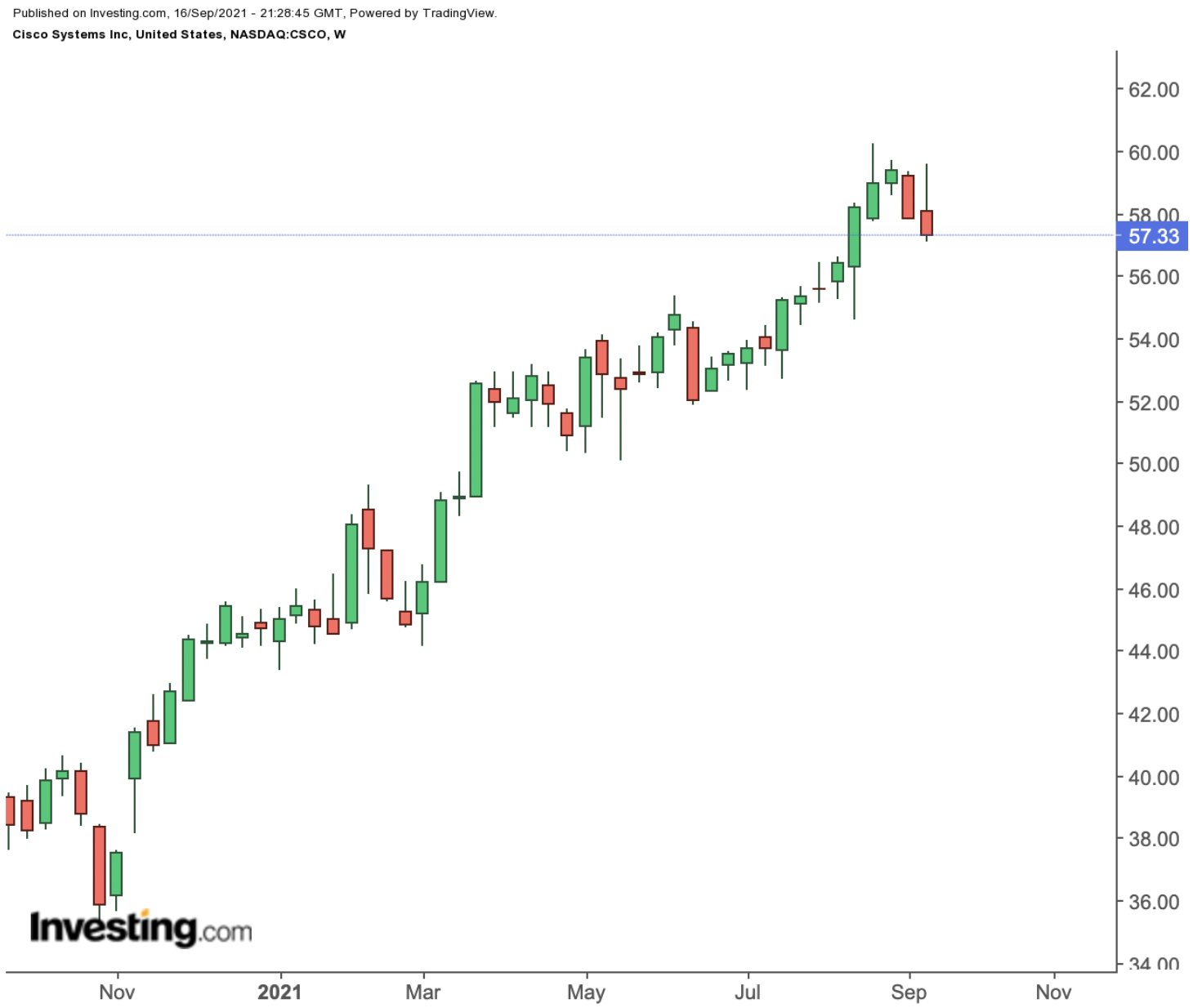Among tech giants, Cisco Systems (NASDAQ:CSCO) doesn’t spark much excitement. The world’s biggest maker of routers and switches dominates in a cyclical market, focusing on the low-margin hardware products.
But this is going to change drastically in the next four years. The Silicon Valley stalwart is being transformed into a provider of networking services delivered over the internet and a seller of software.
Revenue from subscriptions will reach 50% of Cisco’s total by fiscal 2025, the company told analysts in a presentation Wednesday. As part of this push, the company is revamping its existing product categories, aligning them more closely with customer needs.
In November, Cisco will start to break out in five categories: secure agile networks; hybrid work; end-to-end security; internet for the future; and optimized application experiences. As the company pursues this shift, annual sales are predicted to increase 5-7% over the next four fiscal years.
The higher-margin business will also improve profits, posting a compound annual growth rate for adjusted earnings of around 4% to 7% per year and setting a mid-point 2025 target of $4.07 per share.
Judging from Cisco's share performance, it’s clear that investors like the Chief Executive Chuck Robbins’ strategy to fuel growth. Its stock has surged about 30% this year, about double the return that tech-heavy NASDAQ produced during the same period. The stock closed on Thursday at $57.33.
Analysts Turn Bullish
Under Robbins, Cisco has made a string of acquisitions in order to build a software and services business. In 2019, it acquired Acacia Communications for about $2.6 billion, gaining chips and machines that help translate optical signals into electronic data.
These growth initiatives, coupled with the company’s dominant position in the Americas, where it generates the majority of its sales, have positioned the company to outperform when the macroeconomic risks decrease.
Some analysts have turned bullish after the latest update from the company, upgrading the stock to their buy list. Credit Suisse analyst Sami Badri upgraded Cisco to outperform from neutral, saying the company’s transition could push the stock 30% higher from its current level.
In a note, Credit Suisse stated:
“We continue to find supporting evidence to suggest that enterprise and public sector customers (~55% of total revenues), are only beginning their new wave of product orders and deployments, indicating an acceleration in activity.”
Credit Suisse hiked its price target on Cisco to $74 per share from $56.
Cisco’s new performance metrics are aimed at boosting Cisco’s share price, as recurring revenue from software sales in general is valued higher by the market than one-time sales of software or one-time sales of switches and sensors.
Meanwhile, JMP Securities in its note said:
"Management also views the intertwining trends toward hybrid/remote work and the shift to hybrid, multi-cloud architectures as favorable industry tailwinds that position the company to gain share."
In addition to growth, Cisco is also a reliable dividend payer. Though not yet considered an aristocrat, given it has only been paying a dividend for 12 years, Cisco has nonetheless raised its payout every year, making it an attractive option for those seeking growing income.
With a current annual yield of about 2.56%, investors are getting a quarterly payout of $0.37 a share. With a manageable payout ratio of 58%, there is more room for dividend hikes in the future.
Bottom Line
Cisco’s outlook is improving as the company accelerates its transition to a high-margin services business. That shift has made its stock attractive for both growth and income-oriented investors.

